Eating Attitudes, Dieting, and Body Composition in Female Students
VerifiedAdded on 2023/04/25
|16
|2025
|153
Report
AI Summary
This report presents an analysis of demographic data, anthropometric measurements, eating attitudes, and body composition among 60 female students from Doctor of Chiropractic (DC), nutrition, and non-health-related programs. The study examines the prevalence of eating disorders using the Eating Attitude Test-26 (EAT-26) and Tendency to Diet Scale (TDS), and compares these factors across different programs and academic years. Key findings include that nutrition students have the lowest mean BMI, and a small percentage of students across all programs are identified as having eating disorders. Further analysis reveals that first and second-year DC students have significantly higher EAT-26 scores compared to their senior counterparts, and graduate nutrition students exhibit higher EAT-26 scores than undergraduates. While no significant correlations are found between EAT-26 and body composition measurements, a significant correlation exists between TDS and BMI, as well as TDS and waist circumference. The report concludes that nutrition knowledge influences eating behavior, as evidenced by differences in eating patterns between junior and senior students. Access more detailed reports and study tools on Desklib.
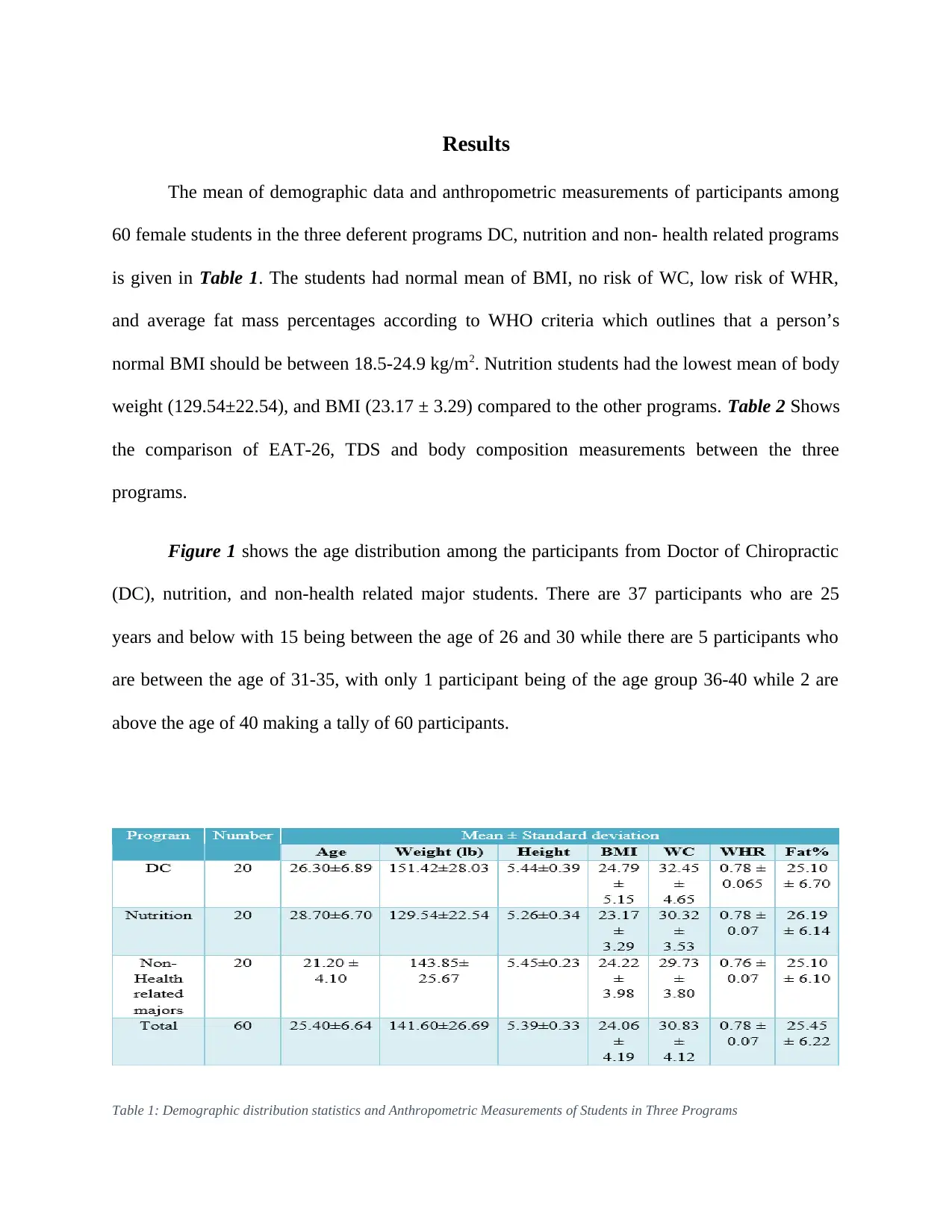
Results
The mean of demographic data and anthropometric measurements of participants among
60 female students in the three deferent programs DC, nutrition and non- health related programs
is given in Table 1. The students had normal mean of BMI, no risk of WC, low risk of WHR,
and average fat mass percentages according to WHO criteria which outlines that a person’s
normal BMI should be between 18.5-24.9 kg/m2. Nutrition students had the lowest mean of body
weight (129.54±22.54), and BMI (23.17 ± 3.29) compared to the other programs. Table 2 Shows
the comparison of EAT-26, TDS and body composition measurements between the three
programs.
Figure 1 shows the age distribution among the participants from Doctor of Chiropractic
(DC), nutrition, and non-health related major students. There are 37 participants who are 25
years and below with 15 being between the age of 26 and 30 while there are 5 participants who
are between the age of 31-35, with only 1 participant being of the age group 36-40 while 2 are
above the age of 40 making a tally of 60 participants.
Table 1: Demographic distribution statistics and Anthropometric Measurements of Students in Three Programs
The mean of demographic data and anthropometric measurements of participants among
60 female students in the three deferent programs DC, nutrition and non- health related programs
is given in Table 1. The students had normal mean of BMI, no risk of WC, low risk of WHR,
and average fat mass percentages according to WHO criteria which outlines that a person’s
normal BMI should be between 18.5-24.9 kg/m2. Nutrition students had the lowest mean of body
weight (129.54±22.54), and BMI (23.17 ± 3.29) compared to the other programs. Table 2 Shows
the comparison of EAT-26, TDS and body composition measurements between the three
programs.
Figure 1 shows the age distribution among the participants from Doctor of Chiropractic
(DC), nutrition, and non-health related major students. There are 37 participants who are 25
years and below with 15 being between the age of 26 and 30 while there are 5 participants who
are between the age of 31-35, with only 1 participant being of the age group 36-40 while 2 are
above the age of 40 making a tally of 60 participants.
Table 1: Demographic distribution statistics and Anthropometric Measurements of Students in Three Programs
Paraphrase This Document
Need a fresh take? Get an instant paraphrase of this document with our AI Paraphraser

Where: DC: Doctor of Chiropractic, BMI: Body Mass Index, WC: Waist Circumference, WHR: Waist-Hip
Ratio.
Figure 1: Age distribution of participants
Table 2: Comparison of EAT-26, TDS and body composition between Programs
Ratio.
Figure 1: Age distribution of participants
Table 2: Comparison of EAT-26, TDS and body composition between Programs
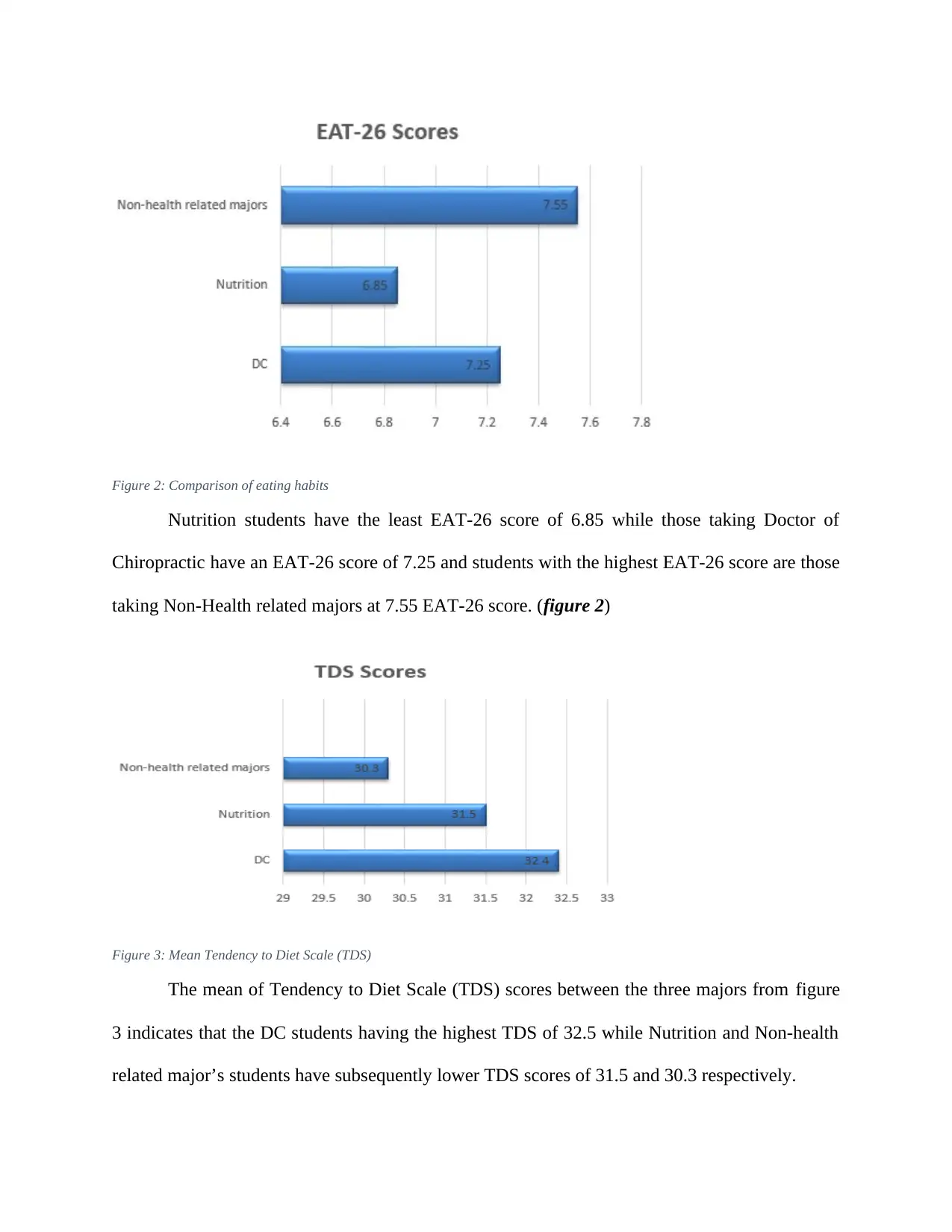
Figure 2: Comparison of eating habits
Nutrition students have the least EAT-26 score of 6.85 while those taking Doctor of
Chiropractic have an EAT-26 score of 7.25 and students with the highest EAT-26 score are those
taking Non-Health related majors at 7.55 EAT-26 score. (figure 2)
Figure 3: Mean Tendency to Diet Scale (TDS)
The mean of Tendency to Diet Scale (TDS) scores between the three majors from figure
3 indicates that the DC students having the highest TDS of 32.5 while Nutrition and Non-health
related major’s students have subsequently lower TDS scores of 31.5 and 30.3 respectively.
Nutrition students have the least EAT-26 score of 6.85 while those taking Doctor of
Chiropractic have an EAT-26 score of 7.25 and students with the highest EAT-26 score are those
taking Non-Health related majors at 7.55 EAT-26 score. (figure 2)
Figure 3: Mean Tendency to Diet Scale (TDS)
The mean of Tendency to Diet Scale (TDS) scores between the three majors from figure
3 indicates that the DC students having the highest TDS of 32.5 while Nutrition and Non-health
related major’s students have subsequently lower TDS scores of 31.5 and 30.3 respectively.
⊘ This is a preview!⊘
Do you want full access?
Subscribe today to unlock all pages.

Trusted by 1+ million students worldwide
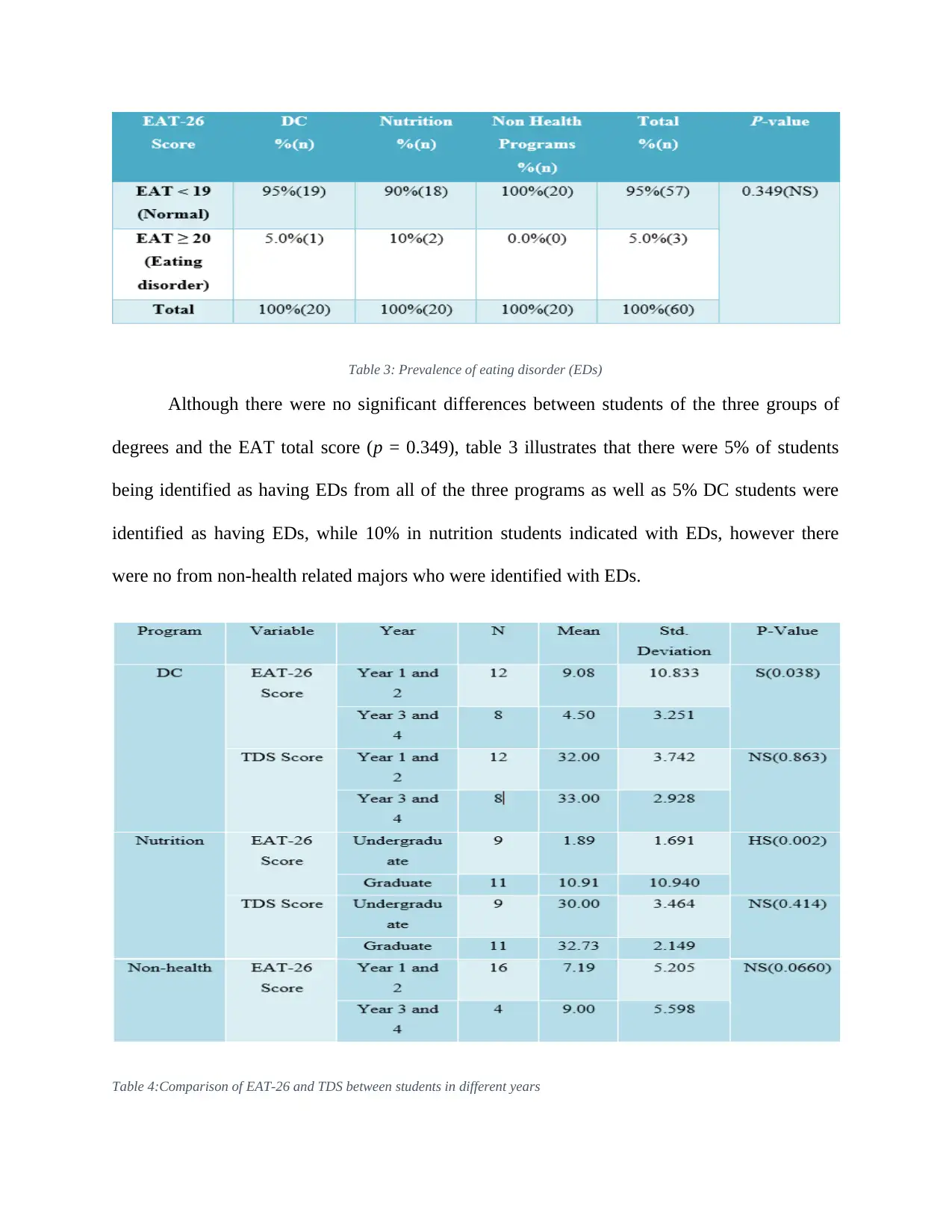
Table 3: Prevalence of eating disorder (EDs)
Although there were no significant differences between students of the three groups of
degrees and the EAT total score (p = 0.349), table 3 illustrates that there were 5% of students
being identified as having EDs from all of the three programs as well as 5% DC students were
identified as having EDs, while 10% in nutrition students indicated with EDs, however there
were no from non-health related majors who were identified with EDs.
Table 4:Comparison of EAT-26 and TDS between students in different years
Although there were no significant differences between students of the three groups of
degrees and the EAT total score (p = 0.349), table 3 illustrates that there were 5% of students
being identified as having EDs from all of the three programs as well as 5% DC students were
identified as having EDs, while 10% in nutrition students indicated with EDs, however there
were no from non-health related majors who were identified with EDs.
Table 4:Comparison of EAT-26 and TDS between students in different years
Paraphrase This Document
Need a fresh take? Get an instant paraphrase of this document with our AI Paraphraser

Further analysis of the eating behavior among students in different study groups indicates
that graduate nutrition and the first and second year DC students are at risk of EDs. Moreover,
mean of EAT-26 score in the first and second year DC students (9.08) was significantly higher
than third and fourth-year students (P=0.038) see table 4.
Figure 4:EAT-26 scores of students per year
Doctor of Chiropractic students in year 1 and 2 have a higher EAT-26 score compared to
those in year 3 and 4 i.e. 4.5<9.08 as depicted in figure 4
Year 1&2
Year 3&4
31.4 31.6 31.8 32 32.2 32.4 32.6 32.8 33 33.2
32
33
TDS Scores
Figure 5: TDS score per year of DC students
Year 3 and 4 students have a higher TDS score (33) compared to year 1 and 2 students
(32) (figure 5)
that graduate nutrition and the first and second year DC students are at risk of EDs. Moreover,
mean of EAT-26 score in the first and second year DC students (9.08) was significantly higher
than third and fourth-year students (P=0.038) see table 4.
Figure 4:EAT-26 scores of students per year
Doctor of Chiropractic students in year 1 and 2 have a higher EAT-26 score compared to
those in year 3 and 4 i.e. 4.5<9.08 as depicted in figure 4
Year 1&2
Year 3&4
31.4 31.6 31.8 32 32.2 32.4 32.6 32.8 33 33.2
32
33
TDS Scores
Figure 5: TDS score per year of DC students
Year 3 and 4 students have a higher TDS score (33) compared to year 1 and 2 students
(32) (figure 5)
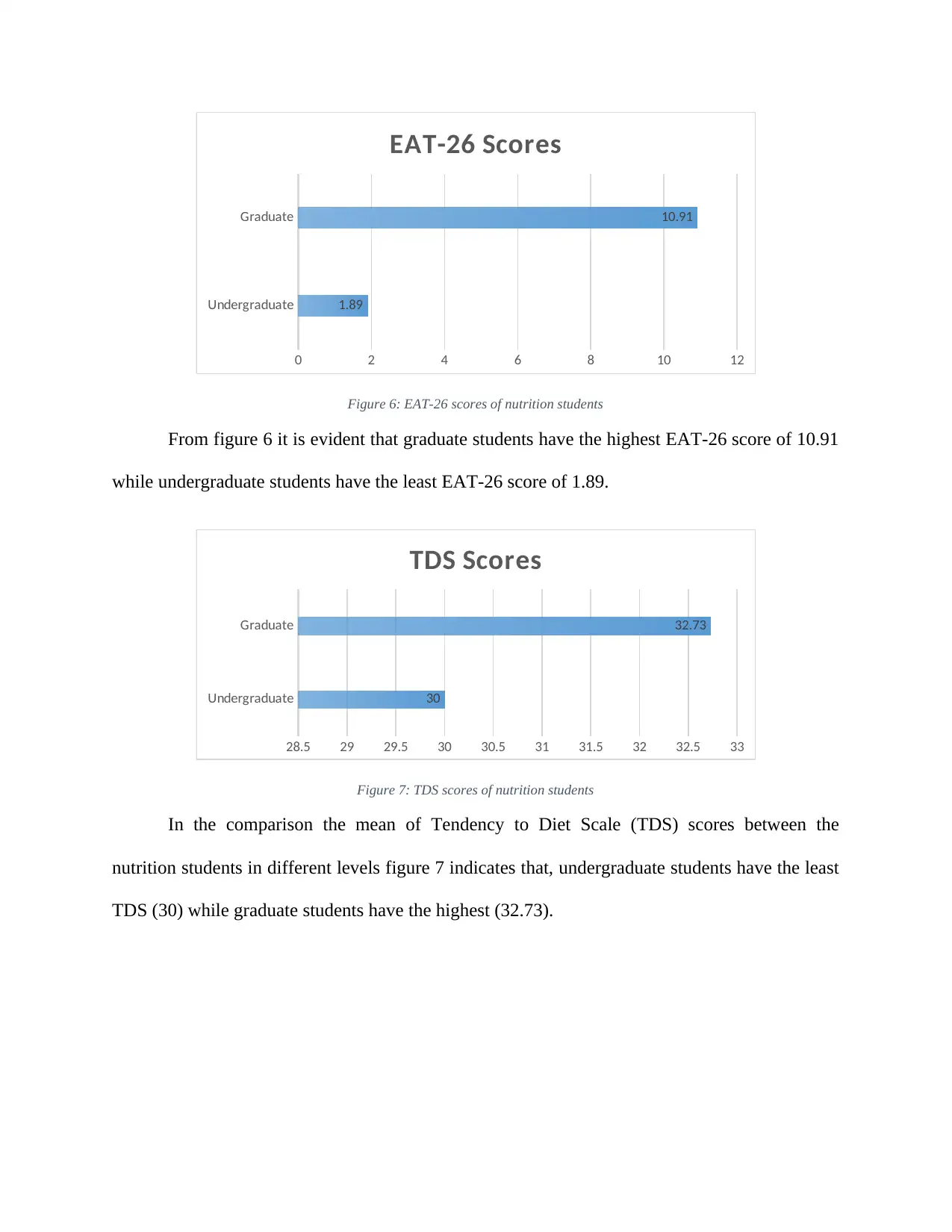
Undergraduate
Graduate
0 2 4 6 8 10 12
1.89
10.91
EAT-26 Scores
Figure 6: EAT-26 scores of nutrition students
From figure 6 it is evident that graduate students have the highest EAT-26 score of 10.91
while undergraduate students have the least EAT-26 score of 1.89.
Undergraduate
Graduate
28.5 29 29.5 30 30.5 31 31.5 32 32.5 33
30
32.73
TDS Scores
Figure 7: TDS scores of nutrition students
In the comparison the mean of Tendency to Diet Scale (TDS) scores between the
nutrition students in different levels figure 7 indicates that, undergraduate students have the least
TDS (30) while graduate students have the highest (32.73).
Graduate
0 2 4 6 8 10 12
1.89
10.91
EAT-26 Scores
Figure 6: EAT-26 scores of nutrition students
From figure 6 it is evident that graduate students have the highest EAT-26 score of 10.91
while undergraduate students have the least EAT-26 score of 1.89.
Undergraduate
Graduate
28.5 29 29.5 30 30.5 31 31.5 32 32.5 33
30
32.73
TDS Scores
Figure 7: TDS scores of nutrition students
In the comparison the mean of Tendency to Diet Scale (TDS) scores between the
nutrition students in different levels figure 7 indicates that, undergraduate students have the least
TDS (30) while graduate students have the highest (32.73).
⊘ This is a preview!⊘
Do you want full access?
Subscribe today to unlock all pages.

Trusted by 1+ million students worldwide
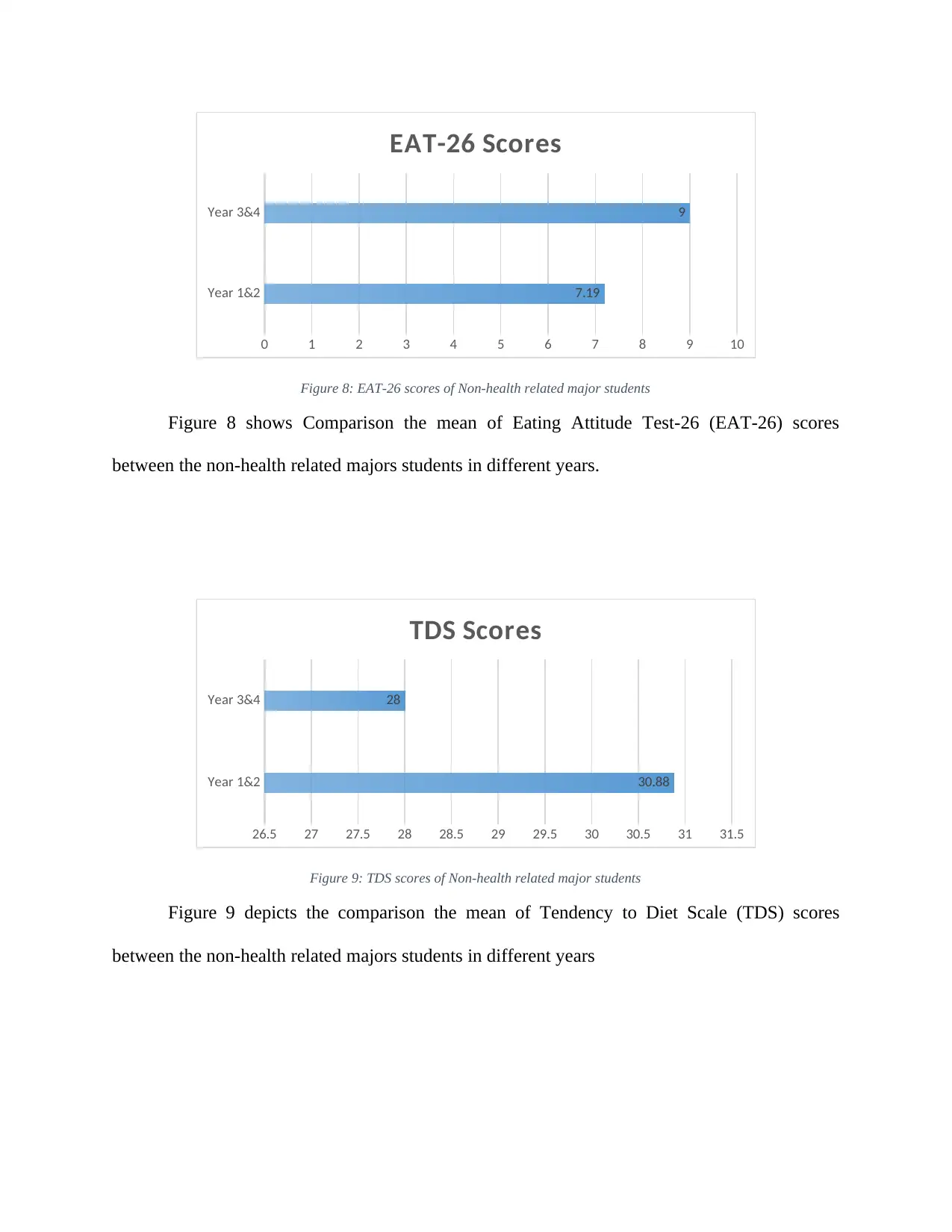
Year 1&2
Year 3&4
0 1 2 3 4 5 6 7 8 9 10
7.19
9
EAT-26 Scores
Figure 8: EAT-26 scores of Non-health related major students
Figure 8 shows Comparison the mean of Eating Attitude Test-26 (EAT-26) scores
between the non-health related majors students in different years.
Year 1&2
Year 3&4
26.5 27 27.5 28 28.5 29 29.5 30 30.5 31 31.5
30.88
28
TDS Scores
Figure 9: TDS scores of Non-health related major students
Figure 9 depicts the comparison the mean of Tendency to Diet Scale (TDS) scores
between the non-health related majors students in different years
Year 3&4
0 1 2 3 4 5 6 7 8 9 10
7.19
9
EAT-26 Scores
Figure 8: EAT-26 scores of Non-health related major students
Figure 8 shows Comparison the mean of Eating Attitude Test-26 (EAT-26) scores
between the non-health related majors students in different years.
Year 1&2
Year 3&4
26.5 27 27.5 28 28.5 29 29.5 30 30.5 31 31.5
30.88
28
TDS Scores
Figure 9: TDS scores of Non-health related major students
Figure 9 depicts the comparison the mean of Tendency to Diet Scale (TDS) scores
between the non-health related majors students in different years
Paraphrase This Document
Need a fresh take? Get an instant paraphrase of this document with our AI Paraphraser
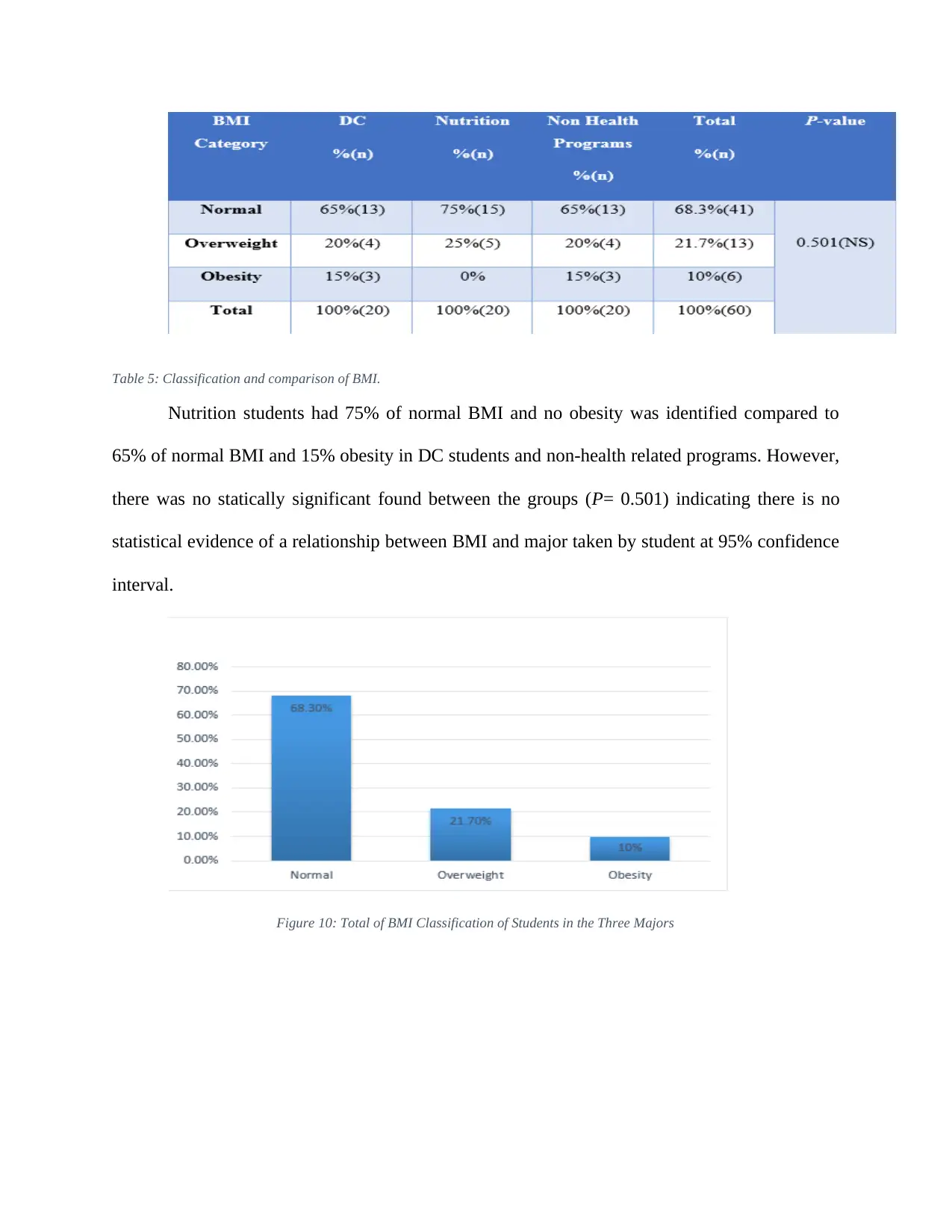
Table 5: Classification and comparison of BMI.
Nutrition students had 75% of normal BMI and no obesity was identified compared to
65% of normal BMI and 15% obesity in DC students and non-health related programs. However,
there was no statically significant found between the groups (P= 0.501) indicating there is no
statistical evidence of a relationship between BMI and major taken by student at 95% confidence
interval.
Figure 10: Total of BMI Classification of Students in the Three Majors
Nutrition students had 75% of normal BMI and no obesity was identified compared to
65% of normal BMI and 15% obesity in DC students and non-health related programs. However,
there was no statically significant found between the groups (P= 0.501) indicating there is no
statistical evidence of a relationship between BMI and major taken by student at 95% confidence
interval.
Figure 10: Total of BMI Classification of Students in the Three Majors
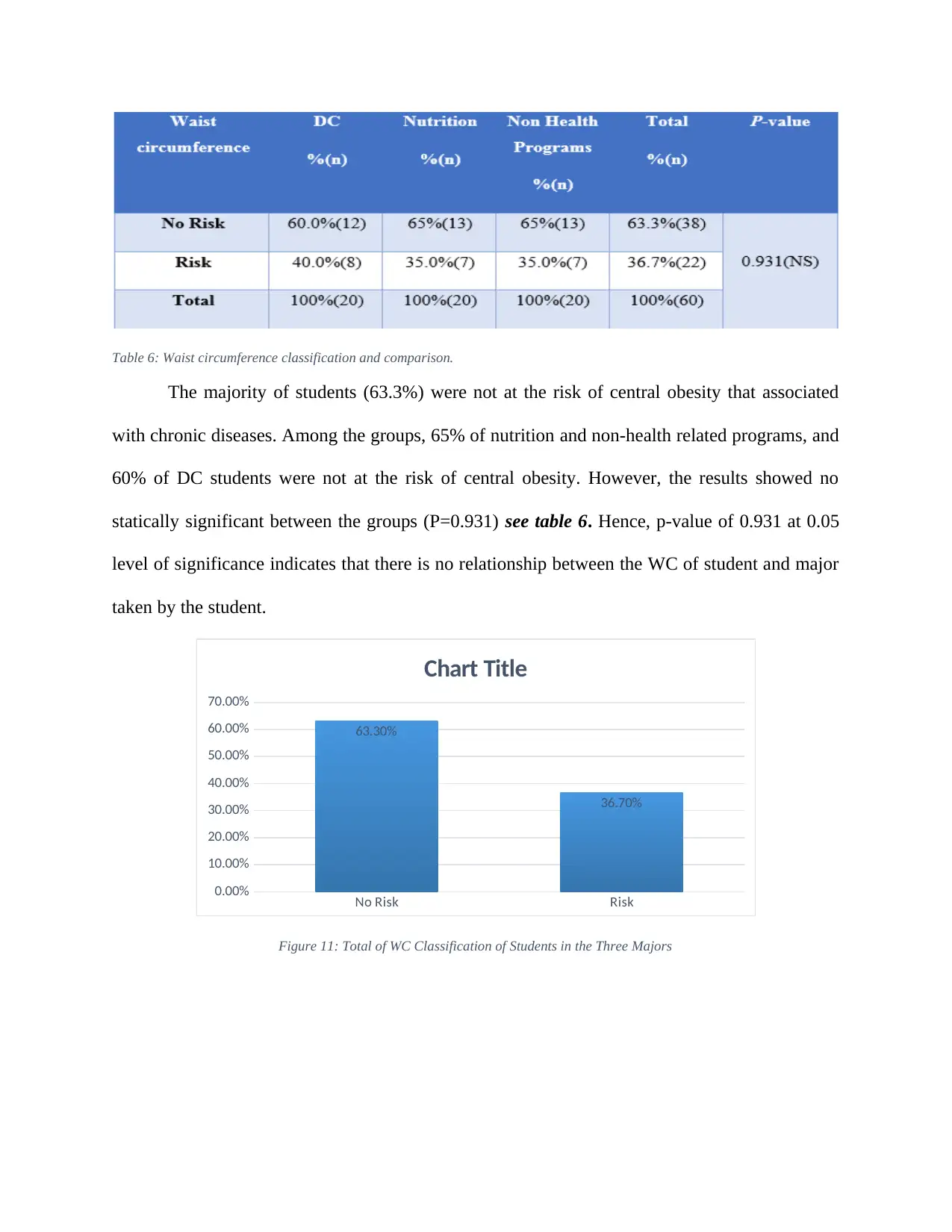
Table 6: Waist circumference classification and comparison.
The majority of students (63.3%) were not at the risk of central obesity that associated
with chronic diseases. Among the groups, 65% of nutrition and non-health related programs, and
60% of DC students were not at the risk of central obesity. However, the results showed no
statically significant between the groups (P=0.931) see table 6. Hence, p-value of 0.931 at 0.05
level of significance indicates that there is no relationship between the WC of student and major
taken by the student.
No Risk Risk
0.00%
10.00%
20.00%
30.00%
40.00%
50.00%
60.00%
70.00%
63.30%
36.70%
Chart Title
Figure 11: Total of WC Classification of Students in the Three Majors
The majority of students (63.3%) were not at the risk of central obesity that associated
with chronic diseases. Among the groups, 65% of nutrition and non-health related programs, and
60% of DC students were not at the risk of central obesity. However, the results showed no
statically significant between the groups (P=0.931) see table 6. Hence, p-value of 0.931 at 0.05
level of significance indicates that there is no relationship between the WC of student and major
taken by the student.
No Risk Risk
0.00%
10.00%
20.00%
30.00%
40.00%
50.00%
60.00%
70.00%
63.30%
36.70%
Chart Title
Figure 11: Total of WC Classification of Students in the Three Majors
⊘ This is a preview!⊘
Do you want full access?
Subscribe today to unlock all pages.

Trusted by 1+ million students worldwide
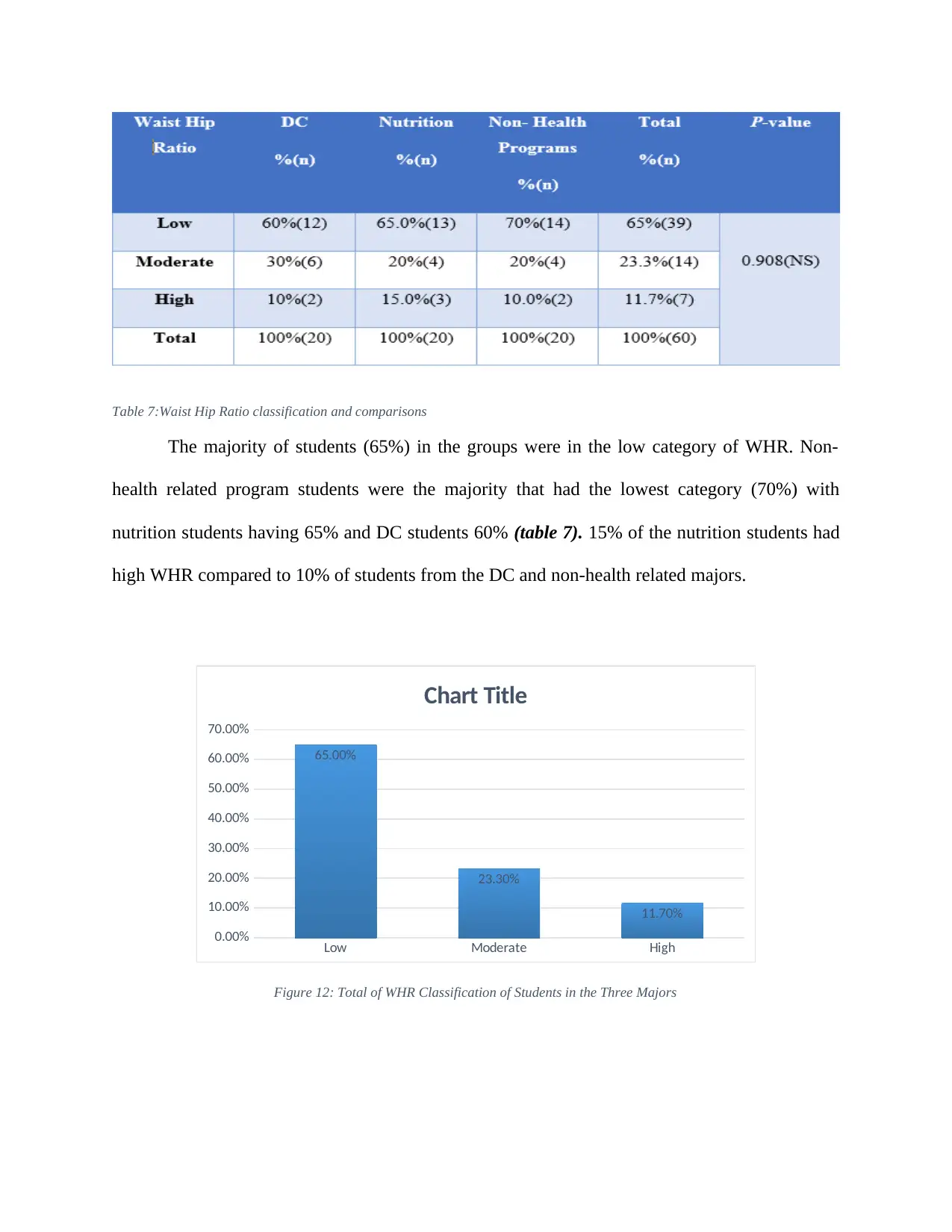
Table 7:Waist Hip Ratio classification and comparisons
The majority of students (65%) in the groups were in the low category of WHR. Non-
health related program students were the majority that had the lowest category (70%) with
nutrition students having 65% and DC students 60% (table 7). 15% of the nutrition students had
high WHR compared to 10% of students from the DC and non-health related majors.
Low Moderate High
0.00%
10.00%
20.00%
30.00%
40.00%
50.00%
60.00%
70.00%
65.00%
23.30%
11.70%
Chart Title
Figure 12: Total of WHR Classification of Students in the Three Majors
The majority of students (65%) in the groups were in the low category of WHR. Non-
health related program students were the majority that had the lowest category (70%) with
nutrition students having 65% and DC students 60% (table 7). 15% of the nutrition students had
high WHR compared to 10% of students from the DC and non-health related majors.
Low Moderate High
0.00%
10.00%
20.00%
30.00%
40.00%
50.00%
60.00%
70.00%
65.00%
23.30%
11.70%
Chart Title
Figure 12: Total of WHR Classification of Students in the Three Majors
Paraphrase This Document
Need a fresh take? Get an instant paraphrase of this document with our AI Paraphraser
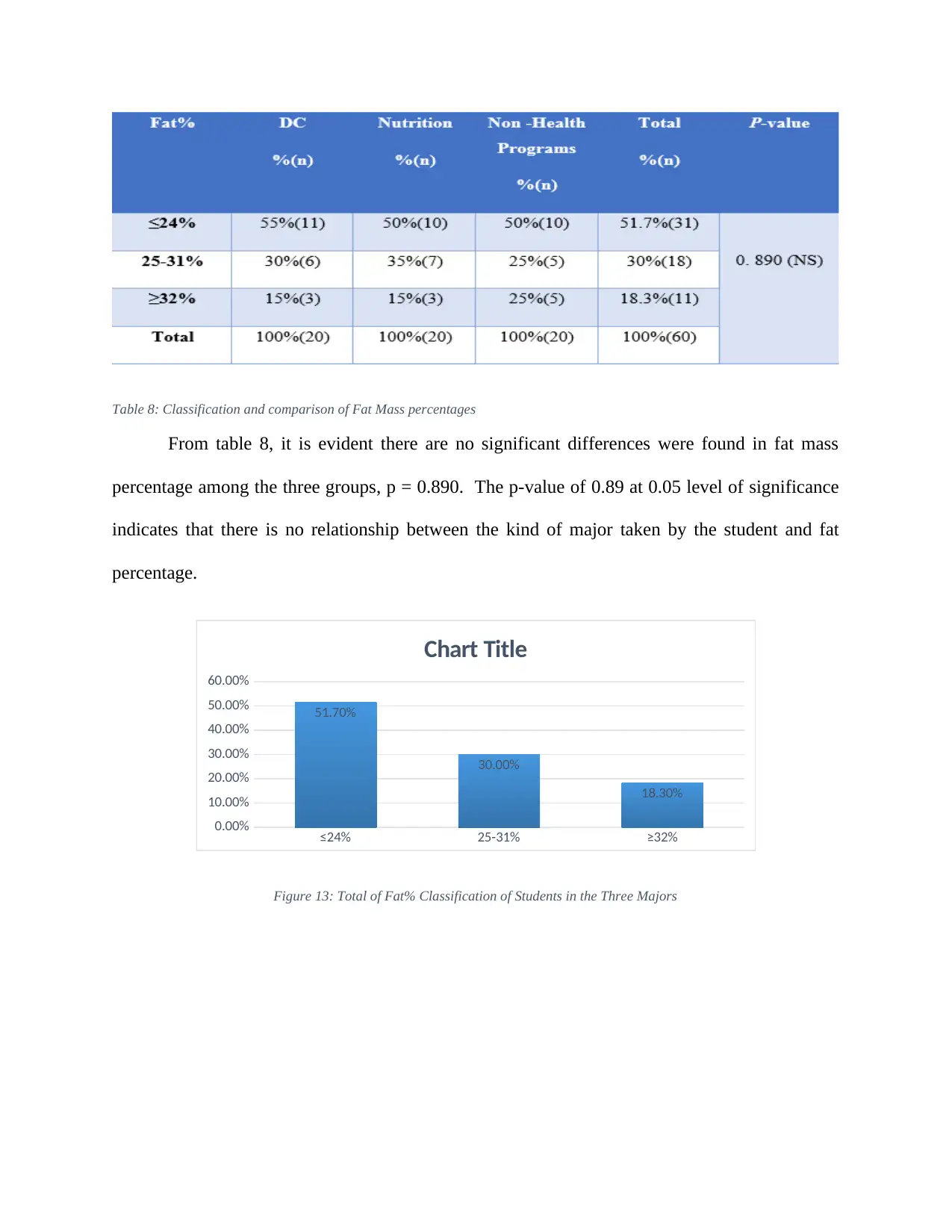
Table 8: Classification and comparison of Fat Mass percentages
From table 8, it is evident there are no significant differences were found in fat mass
percentage among the three groups, p = 0.890. The p-value of 0.89 at 0.05 level of significance
indicates that there is no relationship between the kind of major taken by the student and fat
percentage.
≤24% 25-31% ≥32%
0.00%
10.00%
20.00%
30.00%
40.00%
50.00%
60.00%
51.70%
30.00%
18.30%
Chart Title
Figure 13: Total of Fat% Classification of Students in the Three Majors
From table 8, it is evident there are no significant differences were found in fat mass
percentage among the three groups, p = 0.890. The p-value of 0.89 at 0.05 level of significance
indicates that there is no relationship between the kind of major taken by the student and fat
percentage.
≤24% 25-31% ≥32%
0.00%
10.00%
20.00%
30.00%
40.00%
50.00%
60.00%
51.70%
30.00%
18.30%
Chart Title
Figure 13: Total of Fat% Classification of Students in the Three Majors
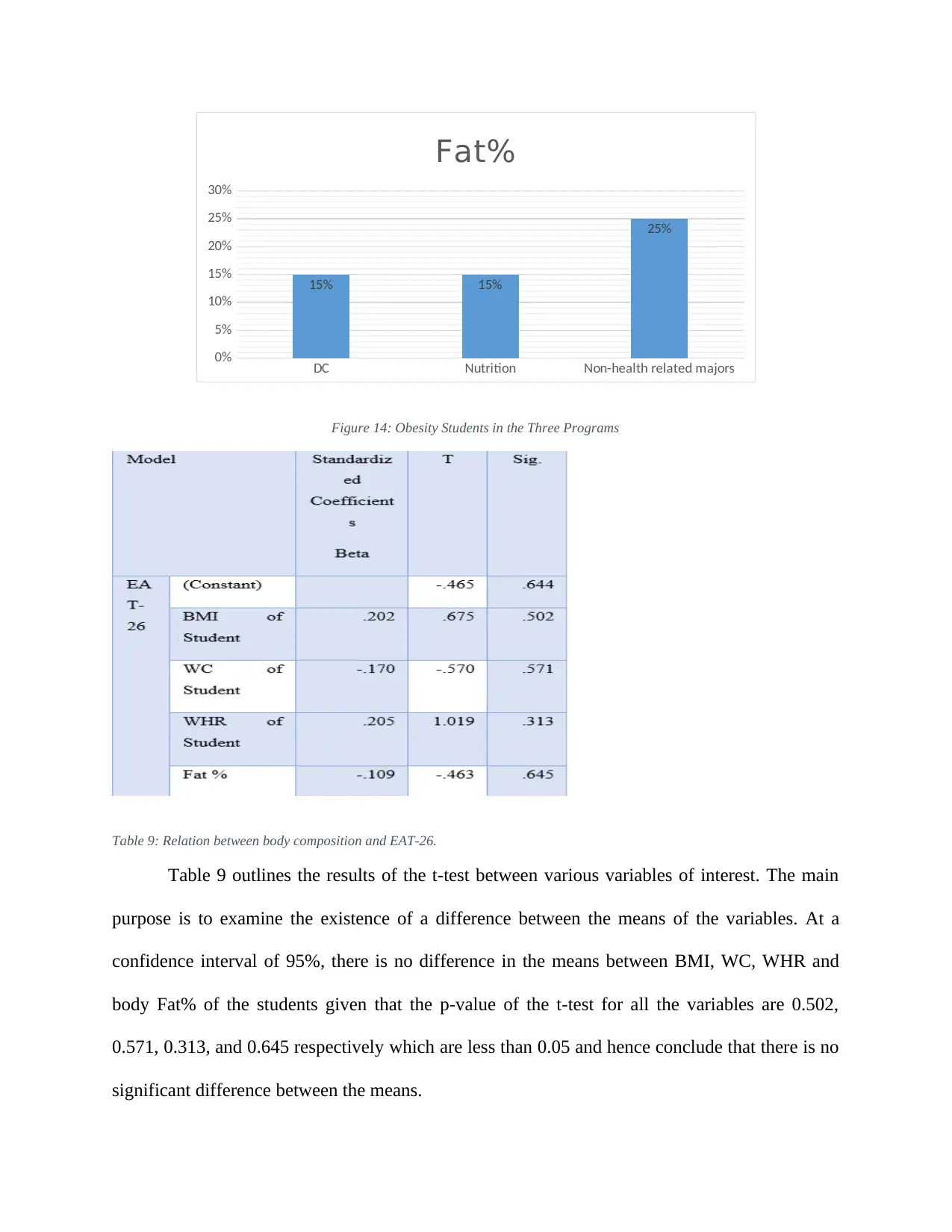
DC Nutrition Non-health related majors
0%
5%
10%
15%
20%
25%
30%
15% 15%
25%
Fat%
Figure 14: Obesity Students in the Three Programs
Table 9: Relation between body composition and EAT-26.
Table 9 outlines the results of the t-test between various variables of interest. The main
purpose is to examine the existence of a difference between the means of the variables. At a
confidence interval of 95%, there is no difference in the means between BMI, WC, WHR and
body Fat% of the students given that the p-value of the t-test for all the variables are 0.502,
0.571, 0.313, and 0.645 respectively which are less than 0.05 and hence conclude that there is no
significant difference between the means.
0%
5%
10%
15%
20%
25%
30%
15% 15%
25%
Fat%
Figure 14: Obesity Students in the Three Programs
Table 9: Relation between body composition and EAT-26.
Table 9 outlines the results of the t-test between various variables of interest. The main
purpose is to examine the existence of a difference between the means of the variables. At a
confidence interval of 95%, there is no difference in the means between BMI, WC, WHR and
body Fat% of the students given that the p-value of the t-test for all the variables are 0.502,
0.571, 0.313, and 0.645 respectively which are less than 0.05 and hence conclude that there is no
significant difference between the means.
⊘ This is a preview!⊘
Do you want full access?
Subscribe today to unlock all pages.

Trusted by 1+ million students worldwide
1 out of 16
Your All-in-One AI-Powered Toolkit for Academic Success.
+13062052269
info@desklib.com
Available 24*7 on WhatsApp / Email
![[object Object]](/_next/static/media/star-bottom.7253800d.svg)
Unlock your academic potential
Copyright © 2020–2025 A2Z Services. All Rights Reserved. Developed and managed by ZUCOL.
